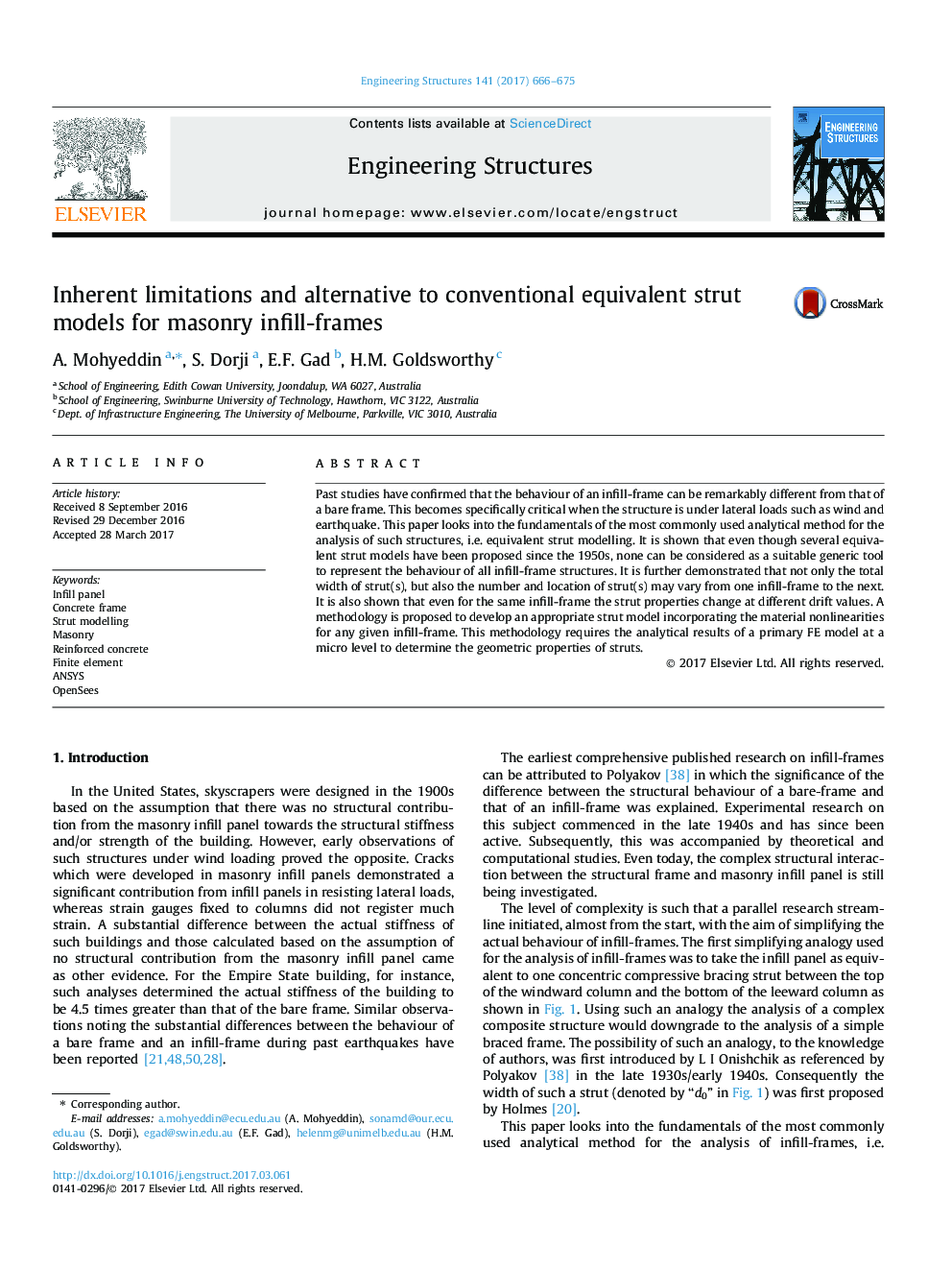| Article ID | Journal | Published Year | Pages | File Type |
|---|---|---|---|---|
| 4920276 | Engineering Structures | 2017 | 10 Pages |
Abstract
Past studies have confirmed that the behaviour of an infill-frame can be remarkably different from that of a bare frame. This becomes specifically critical when the structure is under lateral loads such as wind and earthquake. This paper looks into the fundamentals of the most commonly used analytical method for the analysis of such structures, i.e. equivalent strut modelling. It is shown that even though several equivalent strut models have been proposed since the 1950s, none can be considered as a suitable generic tool to represent the behaviour of all infill-frame structures. It is further demonstrated that not only the total width of strut(s), but also the number and location of strut(s) may vary from one infill-frame to the next. It is also shown that even for the same infill-frame the strut properties change at different drift values. A methodology is proposed to develop an appropriate strut model incorporating the material nonlinearities for any given infill-frame. This methodology requires the analytical results of a primary FE model at a micro level to determine the geometric properties of struts.
Related Topics
Physical Sciences and Engineering
Earth and Planetary Sciences
Geotechnical Engineering and Engineering Geology
Authors
A. Mohyeddin, S. Dorji, E.F. Gad, H.M. Goldsworthy,
